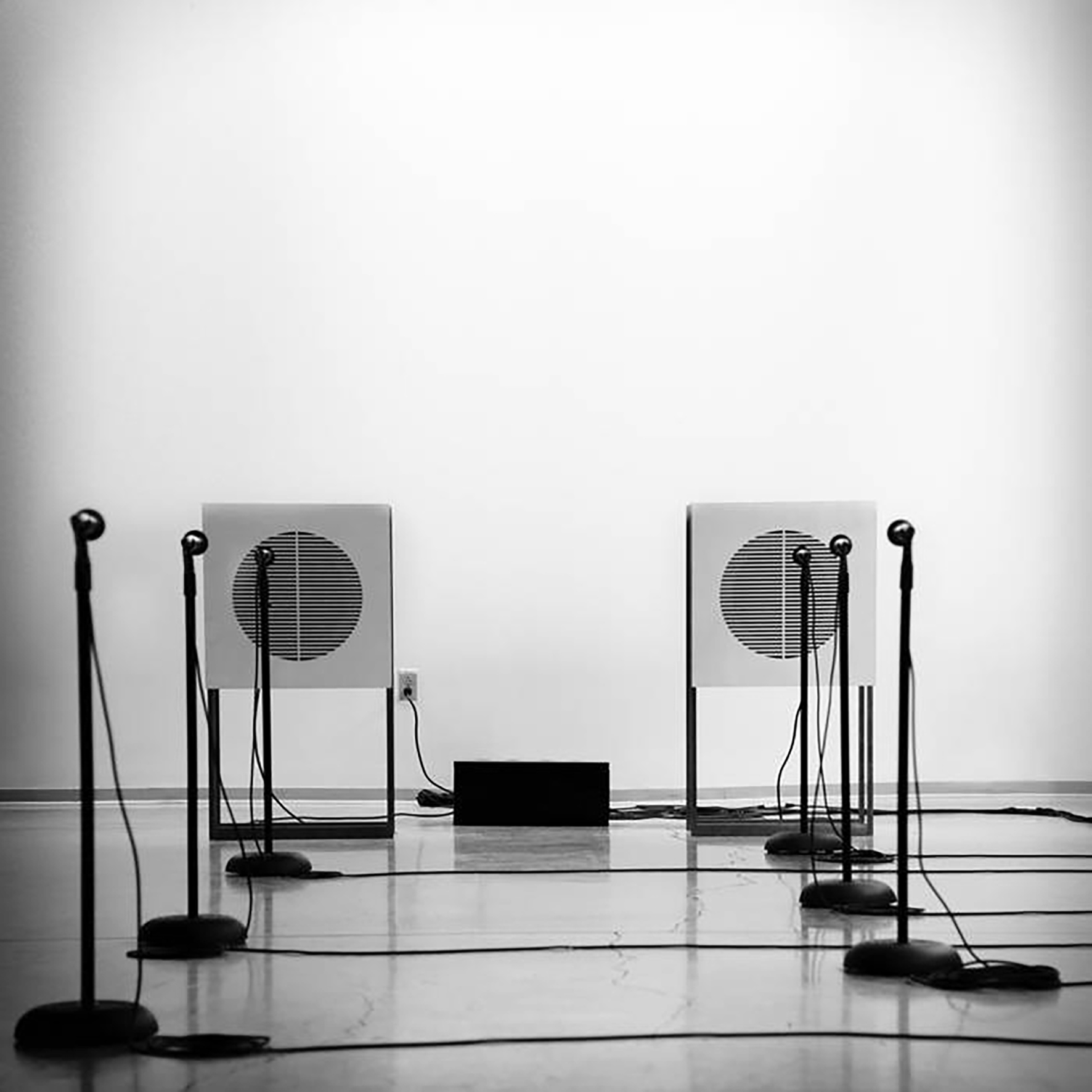Six Microphones
 This impressively ambitious double album documents (in necessarily excerpted form) a month-long installation that ran during NYC's Storefront for Art and Architecture's 30th anniversary celebration back in 2013. Its true roots go much deeper than that, however, as Six Microphones is the culmination of a project that Robert Gerard Pietrusko has been fitfully struggling to perfect for almost two decades. It is easy to see why it took so long to realize, as Six Microphones is the sort of complex, process-based experimental music that only an electrical engineer or a rabidly gear-obsessed noise artist could hope to fully comprehend. Thankfully, grasping the intricacies of Pietrusko's system is not a necessary prerequisite for appreciating the resultant sounds, as Six Microphones is a quietly hypnotic symphony of drifting feedback that deserves a place alongside Nurse With Wound’s Soliquy for Lilith and Toshimaru Nakamura's No-Input Mixing Board experiments as a significant and inspired work of self-generating sound art.
This impressively ambitious double album documents (in necessarily excerpted form) a month-long installation that ran during NYC's Storefront for Art and Architecture's 30th anniversary celebration back in 2013. Its true roots go much deeper than that, however, as Six Microphones is the culmination of a project that Robert Gerard Pietrusko has been fitfully struggling to perfect for almost two decades. It is easy to see why it took so long to realize, as Six Microphones is the sort of complex, process-based experimental music that only an electrical engineer or a rabidly gear-obsessed noise artist could hope to fully comprehend. Thankfully, grasping the intricacies of Pietrusko's system is not a necessary prerequisite for appreciating the resultant sounds, as Six Microphones is a quietly hypnotic symphony of drifting feedback that deserves a place alongside Nurse With Wound’s Soliquy for Lilith and Toshimaru Nakamura's No-Input Mixing Board experiments as a significant and inspired work of self-generating sound art.
In a broad sense, "six microphones" is a very succinct and accurate description of Pietrusko's installation, as it is almost entirely and exactly that: six microphones were pointed at a pair of speakers in a room with very deliberate spacial relationships to one another.The intention, of course, was to create feedback and that set-up did not fail in that regard.While it may seem elegantly simple on the surface, however, the system is quite fiendishly complex in the details of how those microphones interact with one another (and with the room that they were in).In that regard, Pietrusko (an associate professor of Landscape Architecture at Harvard) approached the project with a focus and rigor that would befit mapping DNA or engineering a particle accelerator.A score and some diagrams are helpfully presented with the album to illustrate how the system works, but I only fully grasp the general idea: there are twelve controllers that manipulate the amplitude settings of the microphones, which keeps the resultant feedback in a continuous state of flux.I am a bit fuzzier on how Pietrusko alternates between "on" and "off" settings, but the gist seem to be that there are sixty-four different configurations of active/inactive microphones and each individual piece systematically cycles through them all.Impressively, all of that is just one of the factors that dictates the shape of these "compositions," as the sounds are further transformed by both the physical space that the microphones are in and the movements of the people within the room.Consequently, there can be no definitive version of Six Microphones, as the installation will yield significantly different results every time it is set up.That said, I suppose this album might be the definitive performance by default, as it will be the only one that most people get to hear.
From a compositional/sequencing perspective, Six Microphones is divided into six numbered parts and one overture, yet those delineations are fairly meaningless from a listening perspective.While I am sure someone who has spent a lot of time with the installation (like Pietrusko himself) can become attuned enough to discern the subtly different moods and tones in the various sections, the entire album is essentially a lazily shifting cloud of feedback, so it makes more sense to view it as a whole rather than a collection of discrete movements.The beauty, of course, lies in how the sustained feedback tones bleed together, transform, and converge into oscillating pulses.Given the nature of the sound sources, that is exactly what I would expect: someone who has a long familiarity with challenging music may be able to see some beauty in Pietrusko's feedback blossoms (akin to time-lapse photography), yet I suspect most listeners (like me) will find these sounds to be disorienting and uncomfortably hallucinatory.That certainly has its appeal, as My Cat is an Alien have made a career out of expertly plumbing those depths.At times, however, Six Microphones transcends the expected and such unpredictable interludes and unplanned set pieces are what makes this a compellingly unique album beyond its innovative compositional technique.On each of the four vinyl sides, some kind of phantasmal form takes shape at some point that sounds nothing like feedback: sometimes it sounds like the submerged whirring of a submarine or the hum of heavy machinery.Other times, it resembles a mysterious subterranean throb or an unexpectedly rhythmic series of oscillations. At those moments, patient and close listening almost feels like it reveals ghosts in the shifting fog.
Obviously, a double-album assembled from nothing but pure microphone feedback comes with some caveats.The primary one, of course, is that this is an unapologetically difficult tour de force of sound art.While Pietrusko put an incredible amount of effort into creating the system that made this possible, the form that these pieces take is guided primarily by chance (along with some math and electrical engineering) rather than by a composer interested in achieving a satisfying dynamic arc.Microphones do not care how long it takes to get to an absorbing place, nor do they care whether that place occurs at the beginning, middle, or end of a piece.The flipside of that, however, is that these pieces get to places that they never would have gotten to if they were consciously steered by a human artist.Also, it is always genuinely refreshing to encounter adventurous work from someone who has thought extremely deeply about frequency, harmony, the intricacies of the human ear, or complex acoustic phenomena (for me at least).Six Microphones is the kind of album that is all-too-rare these days: an experimental music album that is actually is truly experimental in its aims.In that regard, this album belongs to the same continuum as works like Alvin Lucier's "I Am Sitting in a Room" or the landmark works of early musique concrète: it could not be further from music-as-entertainment, yet it opens up intriguing new vistas in what is possible.
Samples can be found here.



